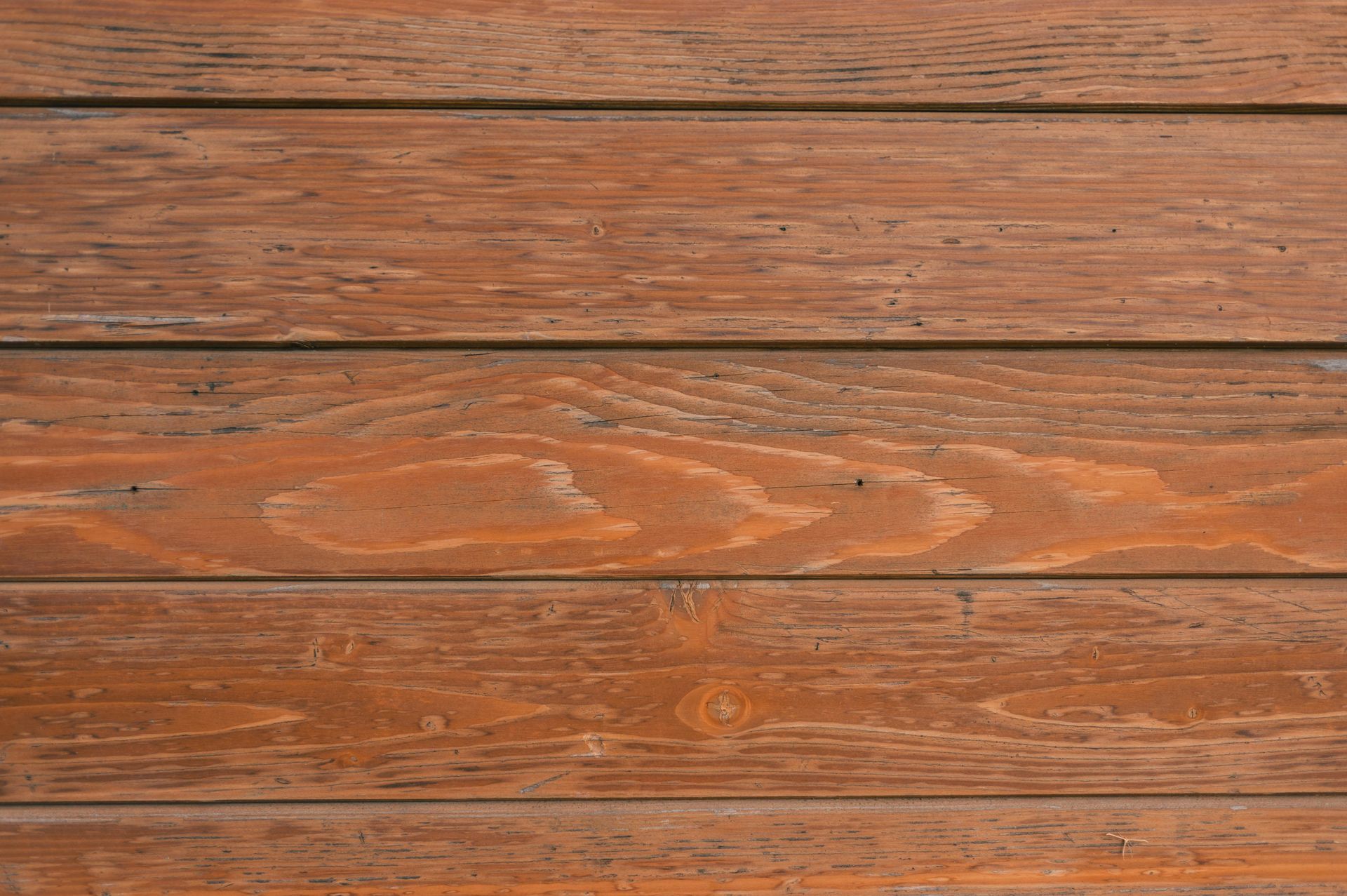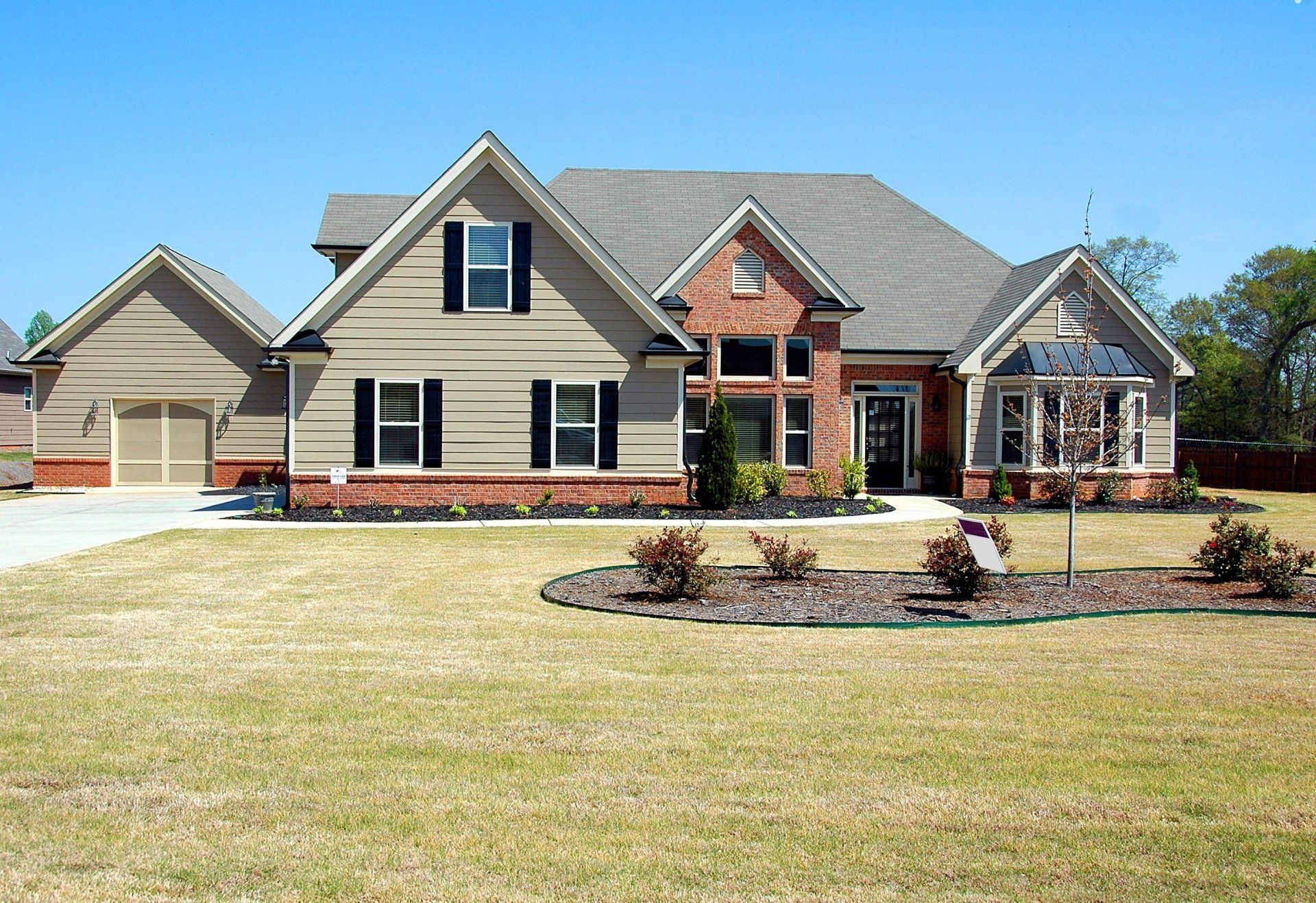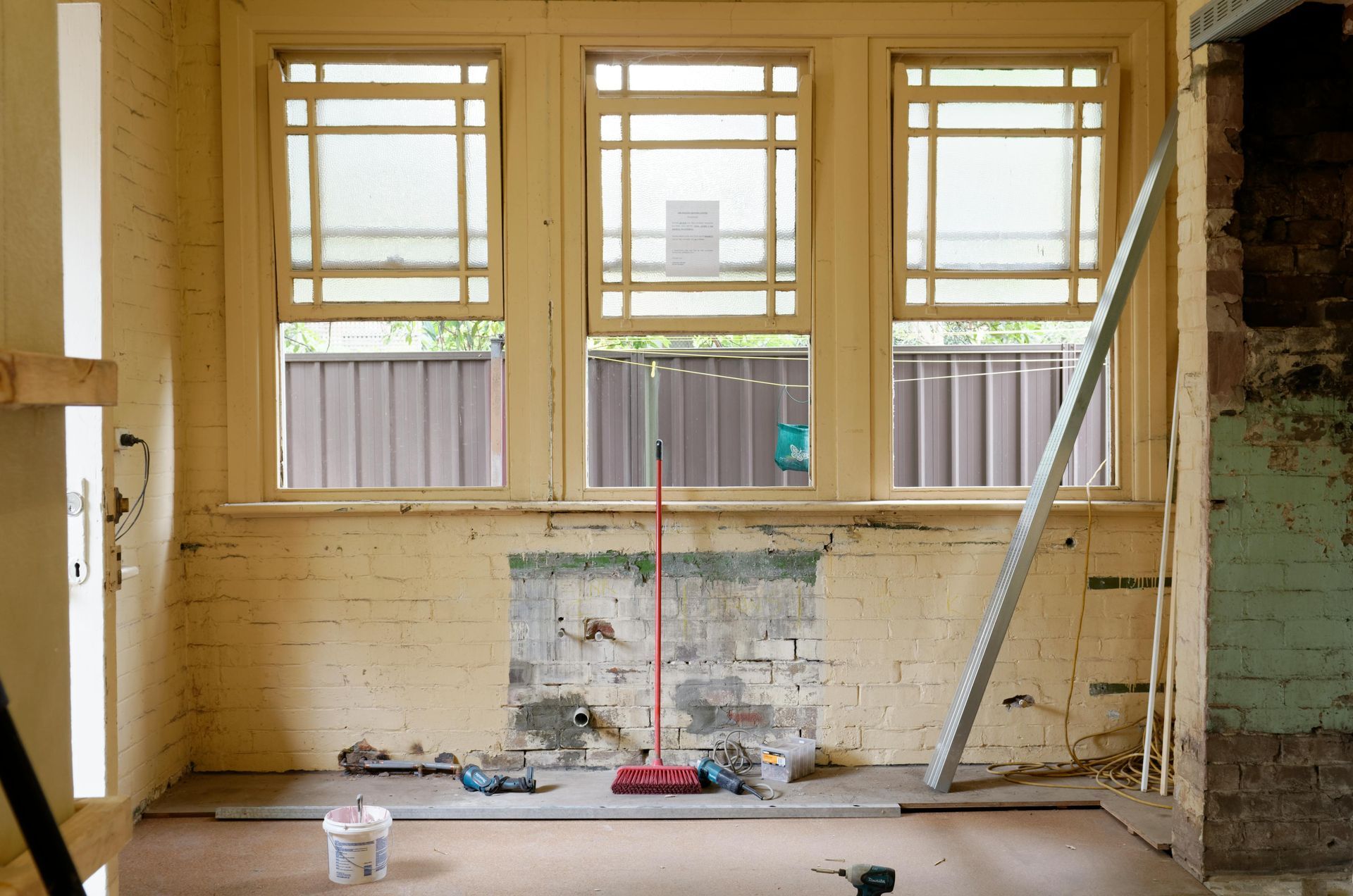What Lies Beneath Your Siding
Robert Lombardo • November 15, 2024
When You're in Trouble and What to Look For

When it comes to maintaining your home, the siding on your house often takes the most abuse from the elements. It’s your first line of defense against the weather, dirt, and pests. But what happens when the siding begins to show signs of wear or damage? What’s lurking beneath that layer, and how do you know when you might be in trouble?
At Higher Point General Contracting, we understand that siding is more than just an aesthetic feature; it’s a crucial part of your home’s protection. In this blog, we’ll explore what lies beneath your siding, what can go wrong, and when it’s time to call in the professionals.
The Role of Siding in Your Home’s Defense
Siding is your home’s primary barrier against the outside elements, helping to regulate temperature, keep moisture at bay, and protect the structure of your home from water damage, rot, and mold. Beneath your siding, several layers work together to provide insulation, moisture protection, and structural integrity. These layers typically include:
Vapor Barrier: A protective layer that helps prevent moisture from entering your home.
Insulation: Keeps your home energy-efficient by maintaining the internal temperature.
Sheathing: Provides structural support and stability for your home.
Wall Studs: The framework that supports everything else.
Each of these layers plays an essential role in maintaining the integrity of your home. If the siding is compromised, moisture or pests can sneak in and damage these underlying layers, leading to expensive repairs.
When Siding Damage Signals Trouble Beneath
Siding is built to withstand a lot, but over time, it can degrade due to weather conditions, improper installation, or general wear and tear. Here are some common signs that something might be wrong beneath your siding:
1. Cracked, Warped, or Loose Siding
While minor cosmetic issues like small cracks or dents might seem harmless, large cracks, warped panels, or loose siding can let moisture get underneath. When water seeps behind your siding, it can lead to:
- Wood Rot: If moisture accumulates behind the siding, it can cause the wooden framework and studs to rot. This is a serious issue that can compromise the structural integrity of your home.
- Mold and Mildew: Moisture trapped behind siding can lead to mold and mildew growth. These can be a health hazard, especially for those with respiratory issues or allergies.
- Increased Energy Bills: Gaps or cracks in siding allow heat to escape in the winter and cool air to escape in the summer, making your HVAC system work harder.
2. Peeling or Bubbling Paint
If the paint on your siding is peeling, bubbling, or discolored, it’s often a sign of moisture infiltration. When water gets trapped between the siding and the wall, it can cause the paint to lift or bubble up. This can be a sign that there is water damage or mold growth behind the siding, which may require immediate attention.
3. Soft or Spongy Siding
If you press on your siding and it feels soft or spongy, it could indicate water damage or rot behind it. This is especially common in wood siding, which is more susceptible to water absorption. Soft spots in the siding usually signal a deeper issue that may involve the underlying sheathing or framing.
4. Visible Water Stains or Discoloration
Water stains or discoloration on your siding or around windows and doors are red flags that water is seeping in from behind. This could be due to a leaking roof, poor window flashing, or gaps in your siding. If the stain extends into your interior walls, this could indicate significant water damage that has made its way into your home’s structure.
5. Unexplained Pests or Insects
If you notice an uptick in insect activity, particularly termites, ants, or carpenter bees, behind your siding, it may be a sign that moisture is present, attracting pests. These insects are notorious for boring into wood, and if left unchecked, they can cause extensive damage to the structure beneath your siding.
6. Increased Drafts and Temperature Fluctuations
If you notice cold drafts in the winter or warm spots in the summer, your siding could be letting air into your home. This could be due to gaps, cracks, or improperly installed insulation behind your siding. If the vapor barrier or insulation is compromised, it could also cause problems with temperature regulation inside your home.
When Should You Call a Professional?
While some minor issues with siding can be handled with simple repairs or a fresh coat of paint, more significant problems require the expertise of a professional contractor. If you’ve noticed any of the signs mentioned above, it’s important to have your home inspected by a professional who can assess the condition of the siding and determine if there’s damage underneath that requires attention.
Here are some reasons to call Higher Point General Contracting:
Water Damage: If water has been getting under your siding for an extended period, there could be significant damage to your home’s structure. Mold, mildew, and rot can cause costly repairs if not addressed promptly.
Termite Infestation: Termites are often drawn to moist, damaged wood, and can cause extensive damage to your home’s framing and support. If you suspect termites, you’ll need a professional to assess the situation and handle any necessary treatments.
Structural Damage: If the siding damage is affecting the structural integrity of your home, it’s crucial to address it immediately. Left unchecked, it can lead to unsafe conditions and costly repairs down the line.
The Bottom Line: Prevention is Key
While some siding issues are inevitable over time, regular maintenance and prompt attention to any signs of damage can help prevent costly repairs. Regularly inspect your siding, keep gutters clean, and make sure your home’s exterior is properly sealed to avoid moisture infiltration. If you’re not sure what lies beneath your siding or if you’re concerned about any potential issues, don’t hesitate to call the experts at Higher Point General Contracting.
Our experienced team is here to help with inspections, repairs, and full replacement services, ensuring your home is protected from the elements—inside and out. If you think your siding might be hiding a bigger issue, let us take a look. Contact us today to schedule a free inspection or consultation. We’ll help you protect your investment and keep your home in top shape for years to come.
You might also like

If you’ve ever watched a home renovation show on TV, you’ve probably seen a dramatic transformation happen in what feels like no time — a full kitchen gutted and rebuilt between commercial breaks, or a complete home makeover wrapped up in a week. The reality of construction, however, looks a lot different. Renovations are exciting, but they also require planning, coordination, skilled labor, and sometimes a little patience. At Higher Point General Contracting, we believe our clients deserve honesty and transparency throughout the entire remodeling process. A well-planned project always runs more smoothly, and understanding what affects a timeline can help homeowners set realistic expectations and enjoy the journey — not just the finished result. Every Project Is Unique No two renovation projects are identical. Even homes that look similar on the outside often have completely different underlying structures, systems, and quirks that affect how long a remodel takes. A small bathroom update might take just a few weeks, while a full kitchen renovation — complete with new plumbing, cabinetry, and flooring — can stretch over two to three months. Additions, major structural changes, or full-home remodels can extend into several months or more depending on complexity. Key factors that influence your project timeline include the scope of work, permits, and material availability. A straightforward cosmetic refresh — paint, flooring, and new fixtures — can move quickly, while anything involving moving walls, electrical work, or plumbing lines will naturally take longer. Permitting is another big variable. Townships across Bucks, Montgomery, and Philadelphia counties all operate on different review schedules. Some permits are approved within a few days, while others take several weeks depending on backlogs or inspection availability. Material delays can also affect timing, especially if you’ve chosen custom cabinetry, specialty tile, or high-end fixtures. At Higher Point, we help clients plan ahead to minimize these disruptions, but even with the best preparation, lead times can change — especially for made-to-order items or products shipped from overseas. The Timeline Starts Before the First Hammer Swings A lot of homeowners think the renovation clock starts when our crew shows up with tools — but in reality, the project begins long before demolition day. The pre-construction phase is one of the most important parts of a successful renovation. During this stage, we finalize design choices, layouts, and product selections. We also prepare detailed estimates, submit permits, and schedule material deliveries so that everything aligns once construction begins. Rushing through these early steps can lead to frustration later — like discovering a backordered fixture halfway through a bathroom remodel or realizing cabinetry measurements need adjustment after walls are already opened up. Taking time to properly plan ensures your project runs efficiently once we’re on-site. This proactive approach prevents costly mistakes, saves time in the long run, and reduces the kind of stress that can make renovations overwhelming. Quality Work Takes Time We completely understand how eager homeowners are to see progress — and how tempting it can be to wish for a faster turnaround. But when it comes to construction, quality craftsmanship and long-term durability take precedence over speed. Every phase of the process, from framing and electrical work to tile setting and painting, requires precision and care. Materials need time to set, cure, and acclimate properly to ensure they last for years to come. For example, rushing drywall finishing or flooring installation can lead to visible imperfections later. Similarly, trimming or cabinetry installation demands patience and meticulous detail to achieve that polished, professional look. At Higher Point, we build for longevity — not quick fixes. Our goal is always to leave you with a space that looks incredible the day it’s finished and still feels solid, safe, and stylish ten years down the road. Expect the Unexpected Even with the most detailed plans, renovations often come with surprises — especially in older homes. Once walls are opened up, we might find hidden water damage, outdated wiring, unlevel floors, or plumbing that isn’t up to current code. These discoveries can temporarily pause a project while we evaluate and correct the issue safely and properly. The key difference between a stressful delay and a smooth adjustment is communication. At Higher Point, we make sure our clients are informed every step of the way. If something unexpected arises, we’ll walk you through what we found, explain your options clearly, and update the schedule if needed. This approach keeps you in control of your project while ensuring everything is done correctly and up to standard. Ultimately, it’s better to spend a few extra days fixing a problem the right way than to rush and risk future damage or repairs. The End Result Is Worth It When the last nail is set, the paint is dry, and the dust has cleared, you’ll finally walk into a space that feels brand new — customized, functional, and designed around your lifestyle. The process may take time, but every step leads to a finished product that truly adds comfort, beauty, and value to your home. We often remind clients that a renovation is not just a construction project — it’s an investment in how you live every day. Taking the time to do it right ensures you’ll enjoy the results for years to come, rather than wishing you’d made different choices later. Let’s Talk About Your Project Thinking about starting a renovation? Whether you’re updating your kitchen, remodeling a bathroom, finishing a basement, expanding your living space with an addition, or upgrading your home’s exterior, our team at Higher Point General Contracting can guide you through every stage — from concept to completion. We’ll help you set realistic expectations, establish a clear timeline, and manage your project with honesty, communication, and craftsmanship that speaks for itself. Contact us to turn your vision into a finished renovation.

Starting a home renovation is one of the most exciting projects a homeowner can take on. Whether it’s reimagining your kitchen, finishing a basement, or giving your entire home a fresh look, the idea of transforming your space is thrilling. But without careful planning and the right guidance, that dream project can quickly become stressful and expensive. At Higher Point General Contracting, we’ve worked with many homeowners who learned the hard way, and we want to help you avoid the same mistakes. Here are five of the most common renovation missteps we see—and how you can prevent them. 1. Skipping the Planning Stage It’s easy to get caught up in the excitement of a renovation and jump straight into demolition. But without a clear plan, things can go off track fast. Homeowners who skip the design and planning stage often end up with delays, unexpected costs, and frustration. The best way to avoid this is to work with a contractor who will help you map out a detailed design, scope of work, and project timeline before any work begins. A strong plan ensures that the finished project matches your vision while staying on time and within budget. 2. Underestimating the Budget Budget surprises are one of the top frustrations homeowners face during renovations. Renovation shows on TV often make projects look less expensive than they really are, and hidden issues can surface once walls or floors are opened up. Old wiring, plumbing problems, or structural repairs are just a few of the surprises that can add costs. To protect yourself, plan for a contingency fund of at least 10–20% of your total budget. This cushion allows you to handle the unexpected without derailing the entire project. 3. Choosing the Wrong Materials Selecting materials based on looks alone is another common mistake. That gorgeous marble countertop may be stunning, but if your family is busy and spills are common, the upkeep might not be practical. Similarly, certain flooring options may look nice but won’t stand up to heavy traffic or pets. Instead, aim for a balance of style, durability, and maintenance. For example, luxury vinyl plank (LVP) flooring delivers the beauty of hardwood with better water resistance and easier care. A professional contractor can help you choose the right products that suit your lifestyle and long-term needs. 4. DIYing When You Need a Pro The rise of DIY tutorials has empowered many homeowners, but it’s important to know where to draw the line. While painting, installing shelves, or small cosmetic upgrades can be great DIY projects, electrical, plumbing, and structural work should always be left to licensed professionals. Attempting these jobs yourself can create safety hazards, code violations, or costly repairs down the road. Hiring a pro may cost more upfront, but it ensures the job is done safely and correctly the first time. 5. Ignoring Function for Style It’s natural to want your home to look beautiful, but style shouldn’t come at the expense of functionality. A kitchen with no storage, a bathroom with poor lighting, or a bedroom without enough closet space may look amazing in photos but will cause frustration in everyday life. When designing your renovation, think about how your family actually uses each space. Do you need room to entertain? Storage for kids’ toys? A quiet home office? Keeping function top of mind will make your new space both stylish and practical. Renovating your home should be a rewarding experience, not a stressful one. By taking the time to plan carefully, set a realistic budget, choose smart materials, know when to call in professionals, and design with functionality in mind, you can avoid the most common pitfalls and enjoy the process. At Higher Point General Contracting, we specialize in helping homeowners create spaces that are both beautiful and built to last. If you’re ready to start your next project, reach out to our team—we’d love to help you bring your vision to life.

Fall is a season of transition. The air turns crisp, the leaves change color, and we begin to shift our routines indoors. It’s also the perfect time to give your home some extra attention before winter weather arrives. Preparing your home for fall isn’t just about cozy décor and pumpkin spice candles—it’s about making sure your home is safe, efficient, and ready to withstand the colder months ahead. At Higher Point General Contracting, we believe that proactive maintenance saves time, money, and stress, and helps homeowners enjoy peace of mind all season long. Here’s a detailed guide to preparing your home for fall. 1. Inspect Your Roof & Gutters Your roof is your home’s first line of defense against the elements, so fall is the ideal time to inspect it for damage. Look for missing or curling shingles, signs of leaks, or areas that may need professional repair. Gutters also deserve special attention—clogged gutters can lead to water backups, ice dams, and even damage to your foundation. Make sure to clear out leaves, twigs, and debris. Confirm that your downspouts direct water at least a few feet away from the house to keep your foundation safe from water infiltration. 2. Seal Windows & Doors Drafty windows and doors are one of the biggest culprits of high energy bills in the colder months. Take time to check the weatherstripping around doors and replace any that is cracked or worn out. Caulking gaps around window frames and trim is another inexpensive fix that makes a huge difference. If your home has storm windows, fall is the time to put them in place—they add a layer of insulation that helps keep warmth inside where it belongs. 3. Service Your Heating System A well-maintained heating system ensures your home will be warm and comfortable throughout fall and winter. Schedule a professional HVAC technician to inspect your furnace or boiler before the first cold snap. They’ll check for safety issues, ensure the system is running efficiently, and make any necessary repairs. Don’t forget to change your HVAC filters regularly—clean filters improve indoor air quality and reduce energy costs. Testing your thermostat now is also wise, and if you’re looking to save on heating bills, consider upgrading to a programmable or smart thermostat. 4. Fireplace & Chimney Maintenance If you have a fireplace, whether wood-burning or gas, fall is the season to prepare it for use. For wood-burning fireplaces, a chimney sweep should inspect and clean your chimney to remove soot, debris, and creosote buildup, which can cause dangerous chimney fires. Check that your damper opens and closes properly and stock up on dry firewood if needed. Gas fireplaces should also be inspected to ensure safe operation and prevent carbon monoxide risks. 5. Outdoor Prep Your yard and exterior need attention too. Rake up fallen leaves not only to keep your lawn healthy but also to prevent slips and clogged drains. Trim back any dead branches that could break off in winter storms and damage your home. If you have a sprinkler system, drain and shut it off to prevent freezing. Disconnect and store garden hoses, and cover or put away outdoor furniture to protect it from the elements. A little care now extends the life of your outdoor spaces and equipment. 6. Safety Check As we spend more time indoors, safety becomes even more important. Test all smoke detectors and carbon monoxide detectors, replacing batteries where needed. This simple step can be life-saving. Check fire extinguishers to ensure they are fully charged and placed in accessible locations like the kitchen and near fireplaces. Also, take a walk around your property at night—replace any burnt-out bulbs and consider adding motion-sensor lighting for security and convenience. 7. Insulation & Attic Care Your attic plays a huge role in keeping your home warm in the fall and winter. Inspect the insulation—if it looks thin or uneven, consider adding more. Proper insulation keeps your heat inside, lowering utility bills and preventing ice dams on your roof. Ventilation is equally important. Clear attic vents to allow airflow, which reduces moisture buildup and prevents mold growth. Final Thoughts Preparing your home for fall may take a weekend or two of work, but the payoff is worth it. A few proactive steps will help you enjoy a safe, comfortable, and energy-efficient home all season long. At Higher Point General Contracting, we’re here to support you with expert inspections, repairs, and upgrades tailored to your needs. Whether it’s sealing up drafts, repairing your roof, or upgrading insulation, we’ll help ensure your home is ready for whatever the colder months bring.


